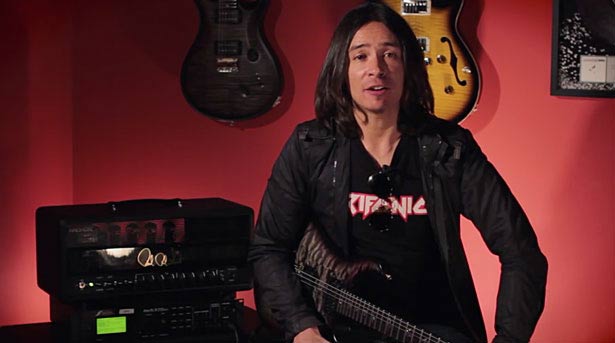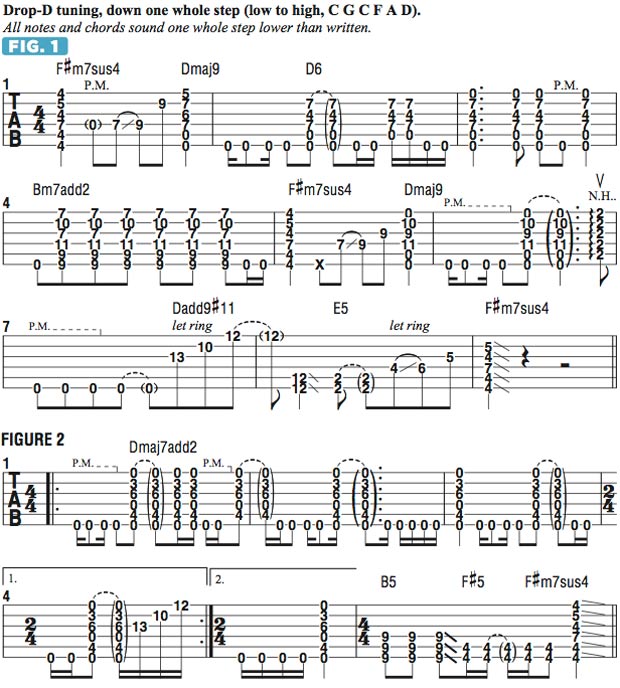Mark Holcomb Lesson: Angular Rhythms and Unusual Chord Voicings, and More on “Mile Zero”

This month, I’d like to continue our look at the Periphery song “Mile Zero,” recorded for 2012’s Periphery II: This Time It’s Personal.
Last time we looked at the tune’s 16-bar primary riff, and I’d now like to move on into the second half of the verse and pre-chorus riffs.
For this song, I’m tuned to drop-D, down a whole step, which is the tuning I use most of the time with Periphery. Low to high, the notes are C G C F A D. I prefer to think of this as a “transposing” tuning, meaning I think of the note and chord names as if the guitar were tuned to regular drop-D at concert pitch, as this facilitates the indication and recognition of chord and note names.
For example, if one were to strum the bottom three strings open, the actual chord sounded would be C5 at concert pitch, but I think most players would more readily think of it as D5, thus the term “transposing.”
FIGURE 1 illustrates the verse riff, following the initial 16-bar phrase. This figure is another example of my penchant for writing riffs and patterns that are based around a chord progression: I came up the progression first—F#m7-Dmaj7-Bm7—and then went about formulating an interesting and unexpected way to connect the chords while also incorporating unusual and unexpected rhythmic syncopations. The first chord is actually F#m7sus4, and I love the way the notes on the D, G and B strings sound when played next to each other like this.
The chord tones are the minor third, fourth and flatted seventh, and then there’s the ninth, G#, sounded on the first string. The fourth and ninth are sometimes referred to harmonically as “tensions,” or “extensions,” and they add a lot of character to a chord voicing. I then use a sliding-sixths lick, sounded on the D and B strings, to set up the Dmaj7 accent that falls squarely on beat four of bar 1. To spice things up, I immediately lower the major seventh two frets, to the sixth, changing the chord to D6, again in order to provide more musical color.
The next chord, which falls in bar 4, can be difficult to fret, especially in the manner I prefer: I like to hook my thumb over the top side of the neck to fret both the sixth and fifth strings at the ninth fret, then use my pinkie on the fourth string, with index finger barred across the top three strings at the seventh fret, and my ring finger at the B string’s 10th fret. If you find that unorthodox fingering too difficult, you can instead use your middle finger to barre across the bottom two strings at the ninth fret.
All the latest guitar news, interviews, lessons, reviews, deals and more, direct to your inbox!

